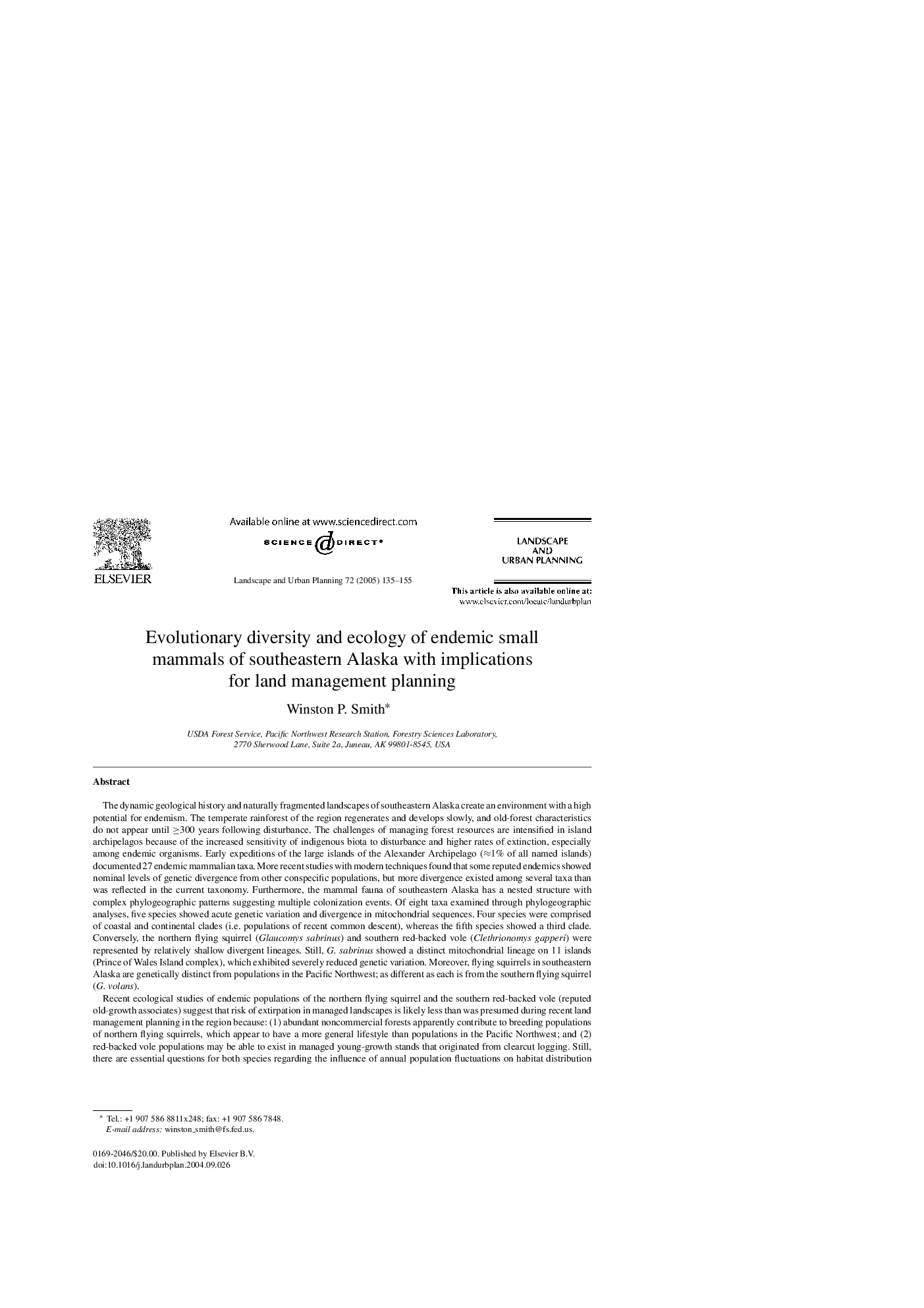| Article ID | Journal | Published Year | Pages | File Type |
|---|---|---|---|---|
| 9736078 | Landscape and Urban Planning | 2005 | 21 Pages |
Abstract
Recent ecological studies of endemic populations of the northern flying squirrel and the southern red-backed vole (reputed old-growth associates) suggest that risk of extirpation in managed landscapes is likely less than was presumed during recent land management planning in the region because: (1) abundant noncommercial forests apparently contribute to breeding populations of northern flying squirrels, which appear to have a more general lifestyle than populations in the Pacific Northwest; and (2) red-backed vole populations may be able to exist in managed young-growth stands that originated from clearcut logging. Still, there are essential questions for both species regarding the influence of annual population fluctuations on habitat distribution and population demography, stand and landscape features that restrict dispersal, and vegetative and structural characteristics of second-growth stands that will sustain breeding populations of both species.
Keywords
Related Topics
Life Sciences
Agricultural and Biological Sciences
Ecology, Evolution, Behavior and Systematics
Authors
Winston P. Smith,
